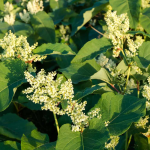In an era where many teens are glued to their screens, the allure of the great outdoors, the thrill of adventure, and the promise of self-discovery are increasingly capturing their interests. Wilderness therapy programs offer an innovative way of equipping students with essential survival skills, leading to a more profound appreciation of nature and self. More importantly, these programs extend beyond mere survival training, offering therapeutic experiences that cultivate self-esteem and leadership skills in adolescents.
An Overview of Wilderness Therapy Programs
Wilderness therapy programs are often positioned as an alternative to the traditional school system, providing a myriad of outdoor activities that promote emotional and psychological well-being. These programs often incorporate adventure-based experiences, including hiking, camping and teamwork games, all in the heart of nature.
Also read : How Does a High-Fiber Diet Influence Gut Microbiota and Weight Loss?
A wilderness therapy program is more than just a summertime adventure. It’s an opportunity for teens to experience the great outdoors in a whole new way. These programs are structured and facilitated by professionals who are not only experienced outdoor enthusiasts but are also qualified therapists. The goal is to create a safe and supportive environment where teens can explore their strengths, face their fears, and develop practical skills that will help them navigate through life’s challenges.
How Wilderness Therapy Facilitates Self-Discovery
In the heart of the wilderness, away from the familiar comforts and distractions of modern life, students are given a unique space to reflect and learn about themselves. The vastness of the wilderness and the unpredictability of the outdoors serves as a metaphor for life’s unpredictable challenges.
This might interest you : What Are the Cognitive Benefits of Bilingual Education for Children with Dyslexia?
Through the challenges presented in wilderness therapy programs, students discover how they react under pressure, how they solve problems, and how they interact with others in a group setting. These activities provide a unique opportunity to build self-awareness and self-confidence, which is crucial in developing self-esteem.
As students learn to trust themselves and their abilities, they become more confident in their decisions and more comfortable with their identity. The wilderness experience strips away societal pressures and expectations, allowing students to redefine their self-worth based on their unique abilities and achievements.
The Role of Wilderness Therapy in Fostering Leadership Skills
Leadership skills are not just about being the loudest voice in the room or the one leading the charge. They involve critical thinking, problem-solving, and effective communication. Wilderness therapy programs offer a unique environment where these skills can naturally develop.
During the course of the program, students are often tasked with leading group activities or making important decisions under pressure. These situations encourage students to step up and take initiative, fostering leadership skills in a natural and organic way. Moreover, the group dynamics within the program allow students to experience different leadership styles, promoting flexibility and adaptability in their own leadership approach.
Wilderness Therapy as a Tool for Therapeutic Transformation
Wilderness therapy combines the allure of the outdoors with the expertise of therapeutic intervention. As students participate in these programs, they’re not just learning how to survive in the wild, they’re also receiving therapy in a unique and effective setting. The wilderness becomes a therapeutic tool, providing a backdrop for individual growth and transformation.
Therapeutic activities are carefully interwoven into the program, ensuring that each adventure promotes mental and emotional growth. These activities, coupled with regular therapy sessions, help students confront personal issues that they may have been struggling with, such as anxiety, depression, or low self-esteem. The wilderness setting offers a new perspective, promoting healing and growth in a unique way.
The Impact of Wilderness Therapy on Adolescents
The impact of wilderness therapy on adolescents extends beyond the duration of the program. The skills, self-esteem, and leadership abilities cultivated during their wilderness experience continue to influence their lives long after they’ve left the great outdoors.
While students initially join the program for the adventure and the promise of survival skills, they often leave with much more than that. They leave with a newfound appreciation of nature, a deeper understanding of themselves, and a set of skills that will help them navigate through life’s challenges. Whether they’re facing a tough decision, dealing with a stressful situation, or leading a team, the skills and experiences from their wilderness therapy program will continually serve them well.
Engaging in a wilderness therapy program is a transformative experience. It offers a unique blend of adventure, self-discovery, and therapeutic intervention that can significantly enhance the self-esteem and leadership skills in adolescents. It’s not just about surviving in the wild; it’s about thriving in life.
Wilderness Therapy in Detail: Program Components
Delving into the specific components of wilderness therapy, we get a clearer image of how these programs work. It’s essential to understand that wilderness therapy is not a ‘one-size-fits-all’ approach to therapy. It is, instead, a comprehensive therapy program that is carefully tailored to meet the individual needs and goals of each participant.
Typical components of a wilderness therapy program include outdoor education, survival training, adventure therapy, team building activities, and in some cases, even rock climbing. These activities are designed to be both physically and mentally challenging, pushing students out of their comfort zones and creating opportunities for personal growth.
Outdoor education and survival training are fundamental aspects of wilderness therapy. Participants learn important survival skills such as building a fire, setting up a tent, navigating using a map and compass, and identifying edible plants. These activities not only help young people appreciate and respect nature, but they also foster resilience, problem-solving skills, and self-reliance.
Adventure therapy and team-building exercises are also integral components of wilderness therapy programs. Activities such as hiking, rafting, or rock climbing provide adrenaline-pumping experiences that can help participants overcome fears, take calculated risks, and develop trust in their abilities and in their team.
Throughout these exercises, therapists are always at hand to provide guidance, create a safe environment for self-expression, and facilitate meaningful discussions that encourage self-reflection and emotional growth.
Wilderness Therapy Programs Across the United States
Wilderness therapy programs are available throughout the United States and cater to a diverse range of age groups, including high school students and young adults. The duration, intensity, and focus of these programs can vary significantly, some focusing more on mental health, while others emphasize more on developing survival skills or leadership abilities.
In the United States, wilderness therapy programs are often conducted in breathtaking natural settings. For instance, some wilderness schools are located in the majestic mountains of Colorado, the vast deserts of Utah, or the lush forests of the Pacific Northwest. This allows participants to connect with nature on a deeper level, enhancing their wilderness survival experience, and further promoting their personal growth.
It is also worth noting that many wilderness therapy programs in the United States are licensed and accredited, which means that they adhere to the highest standards of safety, professionalism, and ethical practices. Participants can thus, expect to receive high-quality therapy, expert instruction, and unwavering support throughout their wilderness journey.
Conclusion
In conclusion, wilderness therapy is a powerful tool for promoting self-esteem and leadership skills among adolescents. The unique combination of adventure, outdoor education, and therapeutic intervention offers a transformative experience that extends beyond the wilderness.
These programs offer a holistic approach to therapy, integrating physical challenges, mental stimulation, and emotional support. The skills acquired through wilderness survival and the personal growth facilitated by these programs equip young people with the confidence, resilience, and leadership skills they need to navigate through life’s challenges.
While wilderness therapy might not be the perfect fit for everyone, for those who resonate with the thrill of adventure, the serenity of nature, and the journey of self-discovery, it can make a significant positive impact. Whether it’s in a wilderness school in the United States or in an international setting, the experience of surviving in the wild can lead to thriving in life.
















